You might think your training regimen is all that matters for success, but have you considered how essential spinal alignment is to your performance? A well-aligned spine can enhance your coordination, boost your energy, and even reduce your risk of injury. Many athletes overlook this aspect, potentially hindering their path to gold medals. So, what specific practices can help you align your spine and access your true potential? The answers could transform your approach to training and competition.
Importance of Spinal Alignment
Maintaining proper spinal alignment is essential for your overall health and well-being. Your spine plays a vital role in your body's structure, supporting your head, protecting your spinal cord, and allowing movement. When your spine is aligned correctly, it helps distribute weight evenly, reducing strain on your muscles and joints. This means you're less likely to experience pain or discomfort, which can hinder your daily activities and overall quality of life.
Poor spinal alignment can lead to a variety of issues, such as chronic back pain, headaches, and even digestive problems. If your spine is misaligned, it can put pressure on your nerves, leading to discomfort that affects both your physical and mental health. You might find it challenging to focus, stay active, or enjoy your favorite hobbies when you're in pain.
By prioritizing spinal alignment, you can enhance your posture and improve your body's mechanics. Simple adjustments, like maintaining a straight back while sitting or standing, can make a world of difference. Regular exercises, stretching, and even professional chiropractic care can help keep your spine in line.
Taking care of your spine isn't just about avoiding pain; it's about fostering a healthier lifestyle. When your spine is aligned, you'll likely notice increased energy levels, improved sleep, and a greater sense of well-being.
How Spinal Health Affects Performance
Your spinal health directly impacts your performance in everyday activities and physical pursuits. A well-aligned spine supports ideal nerve function, which is essential for sending signals between your brain and body. When your spine is in good shape, your muscles respond more efficiently, allowing for better coordination and quicker reflexes. You'll find that simple tasks like lifting, running, or even standing become easier and more effective.
When your spine is out of alignment, it can lead to muscle imbalances and decreased strength. You might experience stiffness or discomfort, making it harder to push yourself during workouts or competitions. This misalignment can limit your range of motion, reducing your overall agility and speed, which are vital in most sports.
Additionally, poor spinal health can lead to fatigue, as your body has to work harder to compensate for the misalignment.
Maintaining a healthy spine also plays a significant role in your mental focus. Pain or discomfort can distract you from your performance, preventing you from giving your best effort. When you're not fully engaged, your skills can suffer, and your confidence may take a hit.
Incorporating exercises that promote spinal health, such as stretching and strengthening routines, can greatly improve your overall performance. By prioritizing your spinal health, you're setting yourself up for success, whether you're training for a marathon or simply enjoying an active lifestyle.
Common Spinal Issues in Athletes
Athletes often face a range of spinal issues due to the physical demands of their sports. You might experience lower back pain, which is common among athletes who perform repetitive movements or lift heavy weights. This discomfort can stem from muscle strain, herniated discs, or even poor posture during training or competition. Ignoring this pain can lead to chronic issues and hinder your performance.
Another prevalent issue is upper back pain, often resulting from the tension and stress placed on the spine during intense training. Whether you're a runner, swimmer, or weightlifter, your upper back takes a beating, and you might find yourself suffering from muscle tightness or joint dysfunction. This can limit your range of motion and affect your overall athletic ability.
Neck pain is also a significant concern, especially for athletes involved in contact sports. Whiplash injuries or muscle strains can occur after falls or collisions, leading to discomfort and reduced strength. If you find yourself experiencing frequent headaches or stiffness, it could be tied to neck issues.
Scoliosis, or an abnormal curvature of the spine, can also affect athletes. While it's often a pre-existing condition, the physical strain from sports can exacerbate the situation, leading to pain and decreased performance.
Recognizing these common spinal issues early on is essential. Addressing them can help you maintain your competitive edge and keep your body in peak condition.
Benefits of Chiropractic Care
Chiropractic care offers a range of benefits that can considerably enhance an athlete's performance and recovery. By focusing on spinal alignment and overall wellness, chiropractic adjustments can play a significant role in your athletic journey. Here are some key advantages you can experience:
- Improved Flexibility: Regular adjustments can help reduce tension in your muscles and joints, allowing for greater range of motion. This flexibility can be essential for executing proper techniques in your sport.
- Enhanced Performance: By optimizing your nervous system function, chiropractic care can improve your body's ability to respond to physical demands. You'll notice increased strength and stamina during your workouts and competitions.
- Faster Recovery: Chiropractic adjustments can speed up the healing process by improving blood flow and reducing inflammation. This means you'll bounce back quicker after intense training sessions or injuries, keeping you on track for your goals.
- Pain Management: If you struggle with chronic pain or discomfort, chiropractic care can provide relief without relying on medications. This natural approach helps you stay focused and motivated in your training.
Incorporating chiropractic care into your routine isn't just about addressing pain; it's about enhancing your overall athletic experience.
Exercises for a Healthy Spine
Maintaining a healthy spine is key to maximizing the benefits of chiropractic care. To support your spine effectively, incorporate specific exercises into your routine. These exercises not only strengthen your back muscles but also enhance flexibility, ultimately improving your overall spinal health.
Start with the cat-cow stretch. Position yourself on all fours, aligning your wrists under your shoulders and your knees under your hips. Inhale as you arch your back, lifting your head and tailbone (cow position), then exhale as you round your spine, tucking your chin and pelvis (cat position). Repeat this for about ten cycles to promote mobility.
Next, try the bridge exercise. Lie on your back with your knees bent and feet flat on the ground. Press through your heels to lift your hips, creating a straight line from your shoulders to your knees. Hold this position for a few seconds before lowering back down. Aim for three sets of ten repetitions to strengthen your glutes and lower back.
Don't forget about the plank! Start in a push-up position, keeping your body in a straight line from head to heels. Hold this position for 20-30 seconds, engaging your core. Gradually increase the duration as your strength improves.
Finally, incorporate gentle twists, such as the seated spinal twist. Sit with one leg extended and the other bent. Twist your torso towards the bent knee, using your arm to deepen the stretch. Hold for 15-30 seconds on each side.
Regularly practicing these exercises will help you maintain a healthy spine and enhance your chiropractic care's effectiveness.
Posture Tips for Athletes
As an athlete, maintaining proper alignment is essential for optimizing your performance and preventing injuries.
Incorporating stretching and strengthening techniques into your routine can help support your spine and improve your overall posture.
Plus, practicing good posture daily will enhance your endurance and agility on the field or court.
Importance of Proper Alignment
Getting your posture in check is crucial for athletes looking to enhance performance and prevent injuries. Proper alignment helps you maintain balance, maximize power, and reduce the risk of strains and sprains.
When your body is aligned correctly, you'll find that movements become smoother and more efficient.
Here are four essential tips to maintain proper alignment:
- Engage Your Core: Strengthening your core stabilizes your spine and pelvis, providing a solid foundation for all athletic movements.
- Keep Your Shoulders Back: Avoid slouching by pulling your shoulders back and down. This opens up your chest and promotes ideal breathing.
- Align Your Head: Keep your head neutral, directly above your spine. This positioning reduces neck strain and improves overall posture.
- Distribute Your Weight Evenly: Whether you're standing or running, evenly distribute your weight across both feet to maintain balance and reduce stress on your joints.
Stretching and Strengthening Techniques
To enhance your posture and overall athletic performance, incorporating targeted stretching and strengthening techniques is crucial.
Start with your core; strong abdominal and back muscles provide stability, helping maintain proper alignment. Exercises like planks and bridges effectively target these areas.
Next, focus on your hip flexors and hamstrings. Tight hip flexors can pull your pelvis out of alignment, while tight hamstrings may lead to lower back discomfort. Incorporate stretches such as lunges and seated forward bends into your routine to improve flexibility and alleviate tension.
Don't forget about your shoulders and upper back. Strengthening exercises like rows and shoulder presses can counteract the slouching that often occurs during training. Combine these with stretches like doorway chest stretches to open up your upper body.
Lastly, make sure your neck isn't neglected. Simple neck stretches can relieve tension and improve alignment.
Remember to perform these techniques consistently to see lasting benefits. By integrating these stretching and strengthening methods into your training, you'll not only enhance your posture but also boost your athletic performance, setting you up for success in your sport.
Daily Posture Practices
Maintaining good posture throughout your day can greatly impact your athletic performance. When you align your body properly, you enhance your strength, balance, and overall efficiency.
Here are some daily posture practices to help you stay on track:
- Mind Your Sitting: When you're at a desk, keep your feet flat on the ground and your back straight. Use a chair that supports your lower back.
- Stand Tall: Whether you're waiting in line or chatting with a friend, engage your core and distribute your weight evenly on both feet. Imagine a string pulling you up from the top of your head.
- Screen Level: If you use a computer, make certain your monitor's at eye level. This prevents neck strain and helps maintain a neutral spine.
- Stretch It Out: Take breaks every hour to stretch your body. Simple neck rolls and shoulder shrugs can relieve tension and reinforce good posture.
Incorporating these posture practices into your daily routine can lead to noticeable improvements in your athletic performance.
Nutrition's Role in Spine Health
Nutrition plays an essential role in maintaining a healthy spine.
You need vital nutrients for strength, hydration, and ideal spinal function to support your body's structure.
Essential Nutrients for Strength
Your spine's health hinges on the essential nutrients that fuel its strength and resilience. To maintain a robust spine and support your overall health, you need to incorporate specific nutrients into your diet.
Here are four key players:
- Calcium: This mineral is critical for bone density. Consuming dairy products, leafy greens, or fortified foods can help keep your bones strong.
- Vitamin D: It aids calcium absorption, ensuring your bones receive the support they need. Sun exposure and foods like fatty fish can boost your vitamin D levels.
- Magnesium: This nutrient plays an important role in muscle function and nerve transmission. Include nuts, seeds, and whole grains in your meals to get enough magnesium.
- Protein: Essential for muscle repair and growth, protein helps to stabilize and support your spine. Opt for lean meats, legumes, and dairy to meet your protein needs.
Hydration and Spinal Function
Hydration plays an essential role in spinal function, impacting not just your overall health but also the integrity of your spine. When you're well-hydrated, the intervertebral discs—the shock absorbers between your vertebrae—maintain their elasticity and height. This helps prevent compression and reduces the risk of injury.
If you're dehydrated, these discs can lose their cushioning ability, leading to increased stress on your spine during daily activities or intense workouts.
Moreover, adequate hydration supports the transport of nutrients to your spinal tissues, ensuring they receive the care they need to stay healthy. Water helps maintain joint lubrication, which is critical for a full range of motion and to keep your spine functioning at its best.
You mightn't realize it, but even mild dehydration can affect your concentration and performance, which is essential for athletes aiming for gold medals.
To keep your spine in line, aim for consistent hydration throughout the day. Listen to your body; if you feel thirsty or fatigued, grab a glass of water.
Real-Life Success Stories
Over the past few years, countless individuals have transformed their lives by prioritizing spinal health.
You might be surprised to learn how focusing on your spine can lead to impressive achievements in both athletic performance and daily life.
Here are four inspiring success stories that highlight the impact of proper spinal care:
- Emily, the Marathon Runner: After struggling with chronic back pain for years, Emily sought chiropractic care. With improved spinal alignment and flexibility, she not only completed her first marathon but also set a personal record.
- Jake, the Weightlifter: Jake was on the verge of giving up his weightlifting dreams due to persistent injuries. By incorporating spinal health routines into his training, he strengthened his core and enhanced his lifting technique, leading him to win a state championship.
- Sarah, the Yoga Instructor: Sarah was dealing with frequent headaches caused by tension in her neck. Once she prioritized her spinal health, her headaches diminished, allowing her to fully embrace her passion for teaching and inspire her students.
- Mark, the Weekend Warrior: Mark loved playing soccer but often felt stiff and fatigued. After adjusting his posture and focusing on spinal exercises, he not only improved his game but also felt more energetic during weekend matches.
These stories show that investing in your spinal health can yield incredible benefits.
Your journey toward a healthier spine could lead to your own success story!
Conclusion
Incorporating spinal health into your training routine can be a game-changer. By prioritizing proper alignment, you'll boost your performance, reduce injury risk, and enhance your energy levels. Remember, it's not just about the hours you put in at the gym; it's about how you care for your body, especially your spine. Embrace chiropractic care, focus on posture, and nourish yourself well. When you get your spine in line, you're one step closer to those gold medals!



